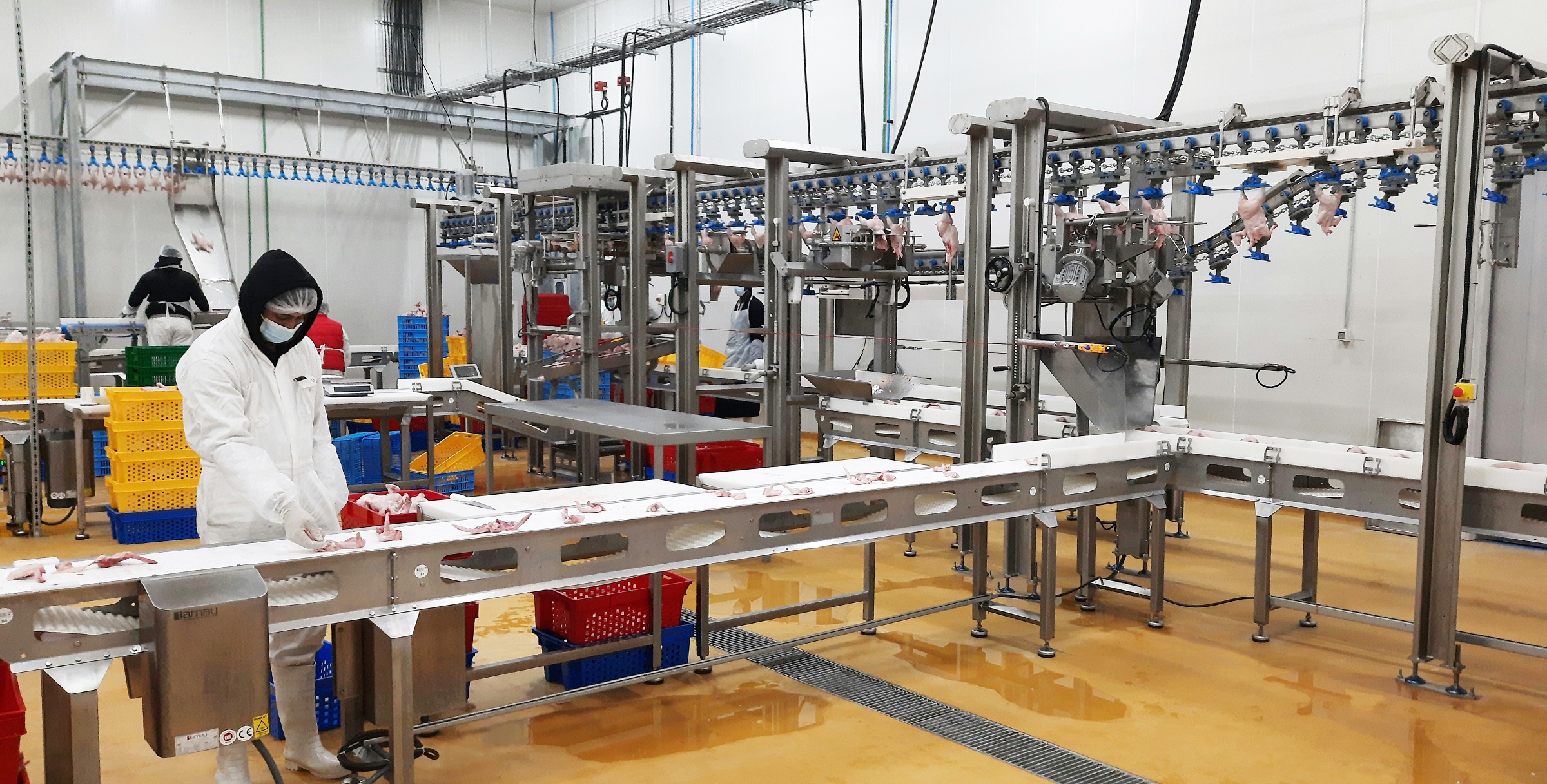In-line weighing and automatic release
Carcasses then pass over a weigh station, where they are weighed automatically. Each carcass’s weight is sent to the system’s control unit, so that the system now knows the weight and quality grade of each product on each shackle. According to the program set by plant management into the control unit, each carcass will be automatically released at one of a number of release stations, which can be installed anywhere on the overhead conveyor after the weigh station. A typical arrangement of release stations will have one release station for downgrades and the appropriate number of stations for sized “A” grade birds in 50g or 100g increments. There will also be a station for very light or very heavy carcasses.
Not only does the system keep downgrades separate, taking them to where they are either packed whole or cut up; it also sorts “A” grade carcasses into specific sizes, releasing them into a series of bins and thereby contributing to greater efficiency in the packing hall.
Improve cutting productivity
In most entry-level processing plants, carcasses are cut into portions by skilled butchers, who then do all cutting and deboning work on each carcass. As volumes increase and skilled workers become more difficult to find, investment in a manual cone cut-up line should be considered. A cone line, where each operative does one job only, has three major benefits. By splitting the cut-up process into a number of specific tasks, it effectively de-skills the process. De-skilling the cut-up process means that skilled butchers can be replaced by cheaper staff, who can be trained more quickly. Thirdly, on a cone line, cutting staff have to work at a pre-set speed, potentially improving productivity.
If the processing plant has already invested in an in-line distribution system, carcasses can be released automatically at the cone line itself thereby improving the logistics of the secondary process area.
Marel has decades of experience cutting chicken and will always be happy to train staff in what for many entry-level processing plants will be a completely new way of working.



